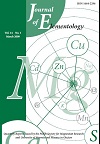Health-supporting properties of beef
Wydanie: 1/2012
Otrzymano: Brak danych
Zaakceptowano: Brak danych
Opublikowano online: Maj 8, 2012
Autorzy:
Brak danych
Kategorie: Food science, Medicine and veterinary, Review paper
DOI: 10.5601/jelem.2012.17.1.13
Abstrakt:
Contemporary human diet contains excessive quantities of n-6 saturated fatty acids (SFA) and polyunsaturated fatty acids (PUFA), but it is deficient in n-3 fatty acids. This imbalance could be the cause of respiratory diseases, obesity and cancer. Until recently, animal fat, including meat fat, was regarded solely as a source of saturated fatty acids, which are a risk factor for atherosclerosis, obesity and certain types of cancer. Recent studies have shown, however, that animal fats contain biologically active substances beneficial for health, and that only some saturated fatty acids have adverse consequences. The latter group includes lauric acid (C12), myristic acid (C14) and palmitic acid (C16), i.e. mainly the ones with an unfavorable n-6/n-3 fatty acid ratio. Apart from fat, beef also contains high amounts of minerals, mainly phosphorus, potassium, magnesium and zinc. Conjugated linoleic acid (CLA), in particular its cis-9 trans-11 and trans-9 cis-11 isomers, is one of the substances with health-supporting properties. Synthesized solely in the gastrointestinal tract of ruminants, CLA reaches the blood stream and is used by the mammary gland to synthesize milk fat. CLA is embedded in the animal’s adipose tissue. There is a large body of research confirming CLA’s ability to reduce the risk of atherosclerosis and obesity, and to lower cholesterol levels. When incorporated into the human diet in the amount of 1.5 to 3.5 g, CLA exerts anticarcinogenic effects (it inhibits the development of breast cancer, malignant melanoma, colorectal cancer and lung cancer). CLA prevents and alleviates the symptoms of type 2 diabetes; it is a powerful antioxidant and it boosts immunity. The highest quantities of CLA have been noted in the meat of ruminants. The CLA content of ruminant meat has been determined in the range of 10 to 33 mg 100 g–1 of fat, being much higher than in pork (2-19 mg) and poultry (3.4 mg). Beef also has the most desirable n-6/n-3 fatty acid ratio at 6.3:1 in comparison with pork (12.7:1) and poultry (8.3:1). The highest levels of n-3 fatty acids can also be found in beef (5-6 g in 100 g fat). The objective of this study was to present and discuss the most recent findings concerning the fatty acid content of beef and its implications for human health. Source data were gathered and grouped thematically, and an attempt was made to characterize beef and its fatty acid profile.
Cytacja:

Miciński J., Zwierzchowski G., Kowalski I. M., Wojtkiewicz J., Szarek J. 2012. Health-supporting properties of beef. J. Elem. 17(1):149-157.
Słowa kluczowe:
fatty acids, CLA, minerals, health-promoting properties of beef
O wydaniu:

17.1.2012
Jsite


